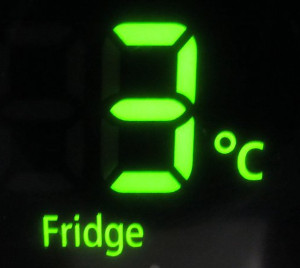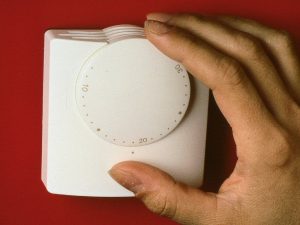Here are lots of ideas about how to save energy. Also, there are hundreds of sites out there with energy saving tips. See our links page for a selection.
First, thanks to Becky Taylor:
What energy am I using?
The first thing to do is to look at, and understand your energy bills – gas, water, electricity, oil if you use it, and petrol/diesel. There are excellent resources for this online (Ofgem the gas and electricity network regulators one is a good place to start: https://www.ofgem.gov.uk/consumers/household-gas-and-electricity-guide/understand-your-gas-and-electricity-bills)
Make sure you are not over-paying by taking your own meter readings and checking them against your bill.
Once you know your actual usage you can identify the areas of highest use and then look at ways to cut it – and have an idea about how effective they are. Using a smart meter (either permanently or as a one-off ‘check’ of where your energy use goes) is advisable. Appliances such as hairdryers, electric ovens and tumble dryers use a LOT of energy – when you know how much it is costing you there is more incentive to use it more efficiently or less.
Here are a few areas to consider:
Heating (space and water)
- Fitting reflective panels behind radiators is low cost and increases the amount of heat lost to the wall. If your budget allows then consider smart radiator valves (which turn radiators on and off at set times) or TRV’s (thermostatic radiator valves) that allow you to control temperature directly. You can even get ‘radiator boosters’ that effectively suck in heat from your radiators and re-distribute it around the room.
- Simply shutting curtains at dusk and opening them during the day increases solar variations in temperature in your rooms. Using extra heavy curtains or lining them also increases their efficiency.
- Simple draught-proofing measures (the old sausage-dog door draught excluder) can be effective and low cost. If your budget allows draught proof all windows, doors, wall and ceiling fittings, even ceiling to wall joints and loft hatches.
- When your boiler comes to the end of its life consider replacing with a more energy-efficient type. This is a whole topic in its own right, but in a typical UK household over half of the energy used is for heating, so it makes sense to look at that area first – do your research! The energy saving trust is a good starting point (http://www.energysavingtrust.org.uk/home-energy-efficiency/boiler-replacement)
- Turning down the thermostat is often associated with being cold or ‘putting on an extra jumper’ – but, you can save approximately 3% of your heating energy costs for every degree you turn down the thermostat, and if you use other measures such as radiator boosters and draught exclusion you may not notice the difference in temperature.
- Have your boiler (and gas fires) serviced regularly.
Lighting
- Switch them off when not in use (even if they are LED or energy saving)
- Replace old light bulbs with LED or energy saving ones wherever possible
- Use a motion detector for garden/driveway or outside lights
Appliances
- Switching off standby can have a considerable impact – turn off appliances at the plugs, or invest in a standby saver which allows all appliances to be turned off in one go. Resist the urge to leave phone chargers plugged in 24/7! Do you really need the printer turned on every time you use the computer?
- When replacing appliances in your home consider spending slightly more to get an ‘A’ rated appliance. It’s also worth considering buying UK produced products as the energy use associated with their transport and distribution is much lower than from imported goods, and UK pollution controls are better than those currently in place in the Far East. Look for the EU energy label
- Consider ‘down-sizing’ your appliances – do you really need that latest kitchen gadget or mobile phone or does the old one do the job just as well?
- If you have space, air-dry your clothes on a washing line rather than using a tumble-dryer.
- Wash your clothes at 30 degrees unless they really dirty
- Try and ‘batch-bake’ when using your electric (or gas) oven
- Check your freezer – defrost regularly and make sure it is full, a full freezer requires less energy, so even if it’s not full of food you can re-use the boxes from frozen foods to fill the space.
- Check your fridge, and carefully vacuum or dust the coils on the back of it at least yearly.
Water Use
(Wait a minute – that’s not ‘energy’ – well yes it is, but indirectly, energy is required to provide the clean water in our taps and also to treat the sewage we dispose of.)
- Use a washing up bowl rather than a running tap
- Fill the kettle carefully – only boil what you need
- Only use the washing machine/dishwasher when you have a full load
- Fit eco-efficient flow reducing water fittings to all taps, your shower head and toilet cistern (these are often available free of charge from your water company). The energy saving trust estimate that fitting a water efficient shower head could save an average household around £75 on gas for water heating, and a £120 on water bills!
- Spend less time in the shower
- Use a watering can rather than hosepipe if you have a smaller garden. For larger gardens careful planting of plants that require less water can be effective.
Travel
- Reduce your car use wherever possible. Walk to local shops, or commit to car-sharing/commuting by public transport, walking or cycling one day a week or more.
- Get your car serviced regularly and check tyre pressures monthly, don’t carry excess weight around in your boot, and don’t idle the engine unnecessarily. – it makes more of a difference than you might think.
- Practise ‘fuel-efficient’ driving and ‘eco-driving’ skills by being smooth with the accelerator and brakes (where safe to do so!).
- See our transport intro for more.
Be savvy when looking at your energy saving – In a typical UK household over half of the energy used is for heating, so it makes sense to look at that area first. Don’t be dis-heartened by the cost and size of projects – even making very small changes to your daily routine can make a difference – it all adds up.
And thanks to Nick Clack for the following:
There is a great deal you can do to save energy. The starting point for many people is their home, but there are numerous opportunities to reduce energy use in other key aspects of our lives. An illustration of the large number and wide range of possible actions is the “120 ways to save and conserve energy” set out by OVO Energy – and there undoubtedly many more. You may have already taken significant energy saving steps, but a good way of prioritising further action is to make changes that will deliver big benefits in one or more important ways. Some suggestions for what these might be are offered below.
Your home
Domestic heating accounts for almost a quarter of the UK’s energy demand and a large proportion of total carbon emissions too. Space heating is where most of the energy used by UK homes goes. Therefore measures that significantly reduce heat loss, such as draught-proofing and improving insulation will make a big difference. Draught-proofing is among the cheapest and most effective energy saving options for your home. Filling in unnecessary gaps that allow heat to escape is often straightforward and you may be able to do much of the work yourself. Information and advice on insulation can be found in our insulation topic. If you have single-glazed windows, you should consider good quality double-glazing or, if your finances won’t stretch to that, secondary glazing. Other energy efficiency improvements worth considering include:
- Changing to more-efficient light bulbs, particularly with the falling cost of LED bulbs.
- Switching to more-efficient appliances when it’s time to replace them, including upgrading your boiler if you have one.
- Moving off the national energy grid, which is inherently inefficient, using low-impact solutions and supporting community energy projects that supply local energy.
You can find out if there are any grants available to help you with energy saving improvements by asking your local authority, or through organisations such as the Energy Saving Trust and the Centre for Sustainable Energy. If you need to use professional services to carry out any energy efficiency improvements, you can support local employment by choosing reputable local companies.
Behaviour changes that lead to energy savings generally do not cost anything and are well worth building into your routine, such as:
- Turning down your heating thermostat – it’s particularly worth thinking about this after draught-proofing and insulating as your home should be comfortable at lower temperatures.
- Installing a smart meter to help you understand where you may be using more energy than you need. You can ask your energy supplier if they will install one for free.
Your travel
The best way to save energy in relation to travel is to reduce the amount that you travel – for instance, using local shops in preference to larger outlets further away, going on holiday closer to home or making video calls instead of travelling. If you need to make a journey, then use the lowest energy and lowest impact mode possible. Low-impact transport is covered in depth in our topics, but generally the lowest energy, lowest emissions modes are walking and cycling followed by using a bus or coach, a train, a car (somewhat dependent on fuel type, fuel efficiency and number of occupants) then a plane. Around 40% of short car journeys are less than two miles so there is considerable scope to convert these into journeys on foot or by bike.
If you have to travel by car, there are steps you can take to save energy, such as:
- Car sharing.
- Following smarter driving tips.
- Not rushing to buy a new car: any improved fuel efficiency benefits are likely to be dwarfed by the extremely large amount of energy needed to manufacture it.
Your food
Energy saving and food is all about careful sourcing, including:
- Reducing food miles by growing and producing your own food, responsibly collecting wild food, and buying local produce as directly as possible through farmers markets, veg box schemes, local Food Assemblies and other routes.
- Only buying what you need and minimising the amount of food you waste.
- Buying food with no or little packaging.
- Limiting the amount of energy-intensive foods you buy such as meat and cheese, particularly hard cheese.
Your work
If you work from home the “Your home” section is relevant; if you work remotely then you should consider the “Your travel” section. If you work in an office or another building, continue your energy saving habits from home in your workplace. You could also encourage the creation of energy saving “champions” or better still become one yourself.


